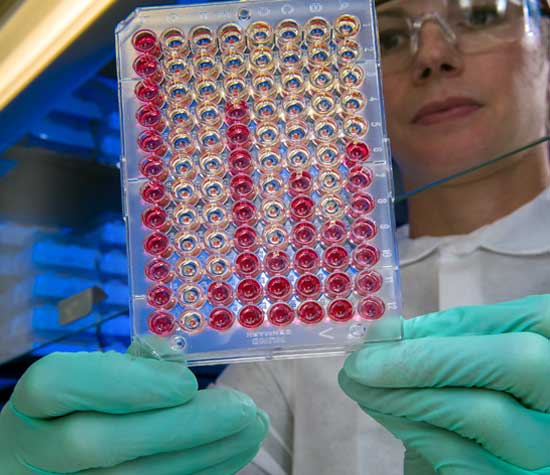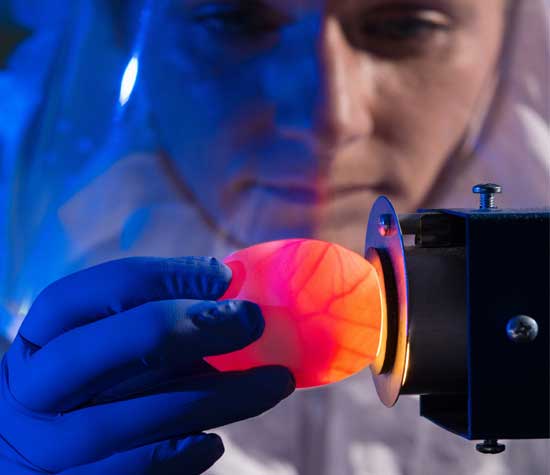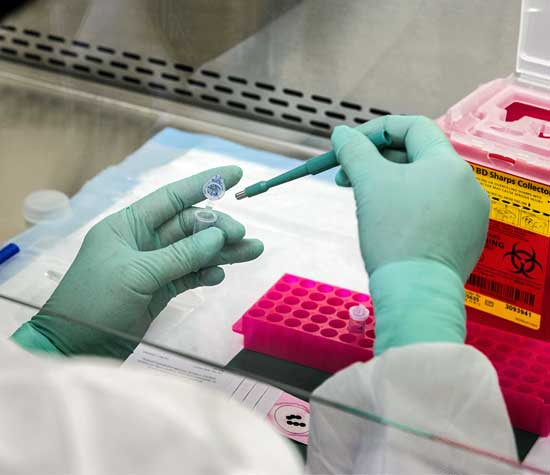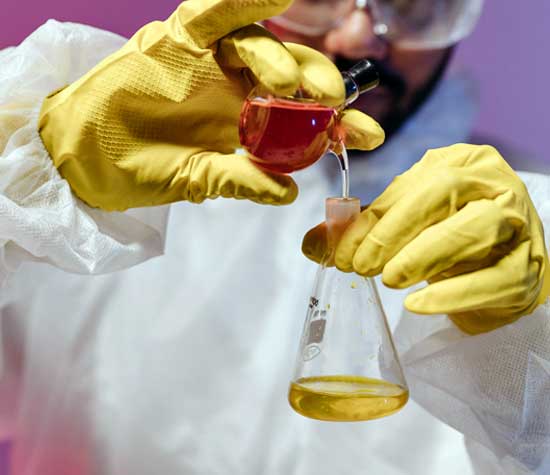The correct gloves protect against chemicals; the wrong gloves enhance chemical contact. There is no universal glove that protects you from all chemicals. To choose the correct glove, go to a Glove Reference Chart - links below. Chlorinated solvents are carcinogenic and are particularly challenging to find appropriate gloves for.
All Gloves Are Permeable

All gloves are permeable, only the permeation rate varies, depending on the chemical, the glove material and thickness, temperature, concentration gradient, etc. However, once a material begins to permeate the glove, it will continue until an equilibrium is reached. You must, therefore, decide when it is appropriate to discard dirty gloves.
Check Gloves

Check gloves before use for signs of wear or penetration. Disposable gloves can be inflated to check for pinholes. When removing gloves, be careful to avoid touching the outside of the gloves with your bare hands. Always remove gloves before leaving lab.
Disposable Gloves

Disposable gloves provide minimal protection and should be used accordingly. If using concentrated solvents, corrosives or toxics, more heavy-duty gloves should be worn. These provide more protection, but have the drawback of being more cumbersome. Note also that about 15% of the population is allergic to latex to some degree.
Gloves for Handling Pyrophorics

Gloves for Handling Pyrophorics: These chemicals spontaneously ignite in air, but are only found in a few departments. Having the proper glove is important to avoid injury from a burning/melting glove. Per a legal Agreement between UC and Cal-OSHA, all lab workers who handle pyrophorics outside of an inert gas glove box, must use special non-combustible gloves for handling pyrophorics. In 2016 these gloves were provided free for affected groups and they received special training from EH&S. Free gloves will be provided while funding lasts. An online training for new workers in these groups is available on the UC Learning Center (search on “Pyrophoric”) and all such workers must take this training, or request live training from EH&S.
Glove Reference Charts (No guarantees are made regarding the accuracy of these charts. Recommend cross-checking at least two sites for consistency.)
